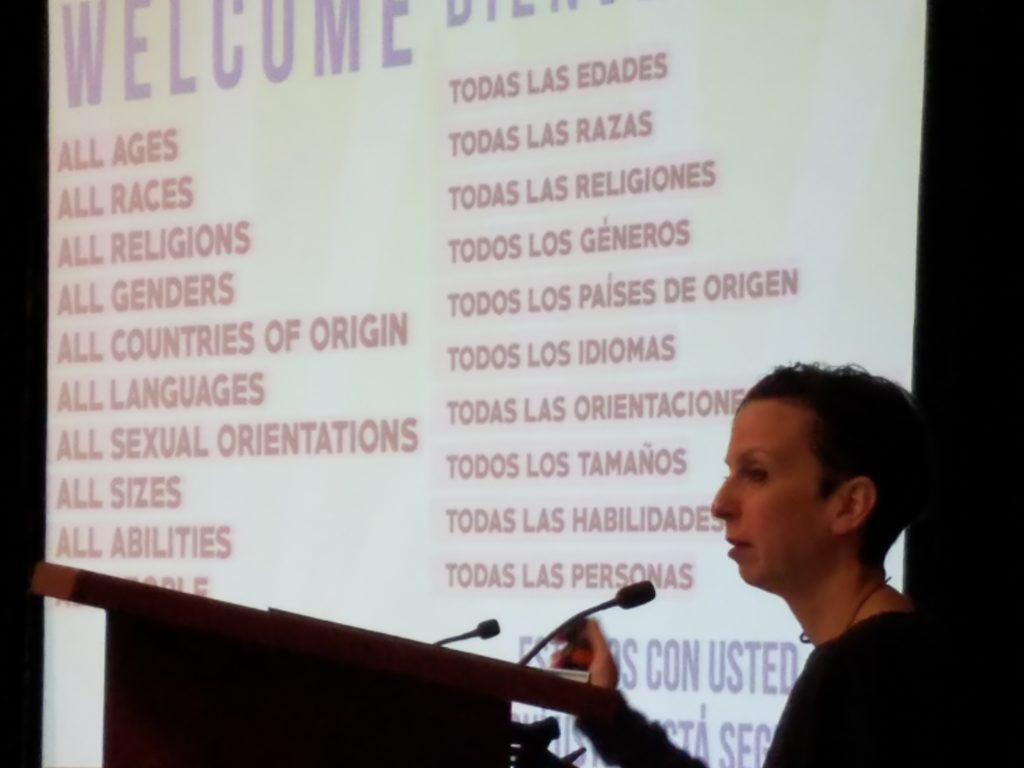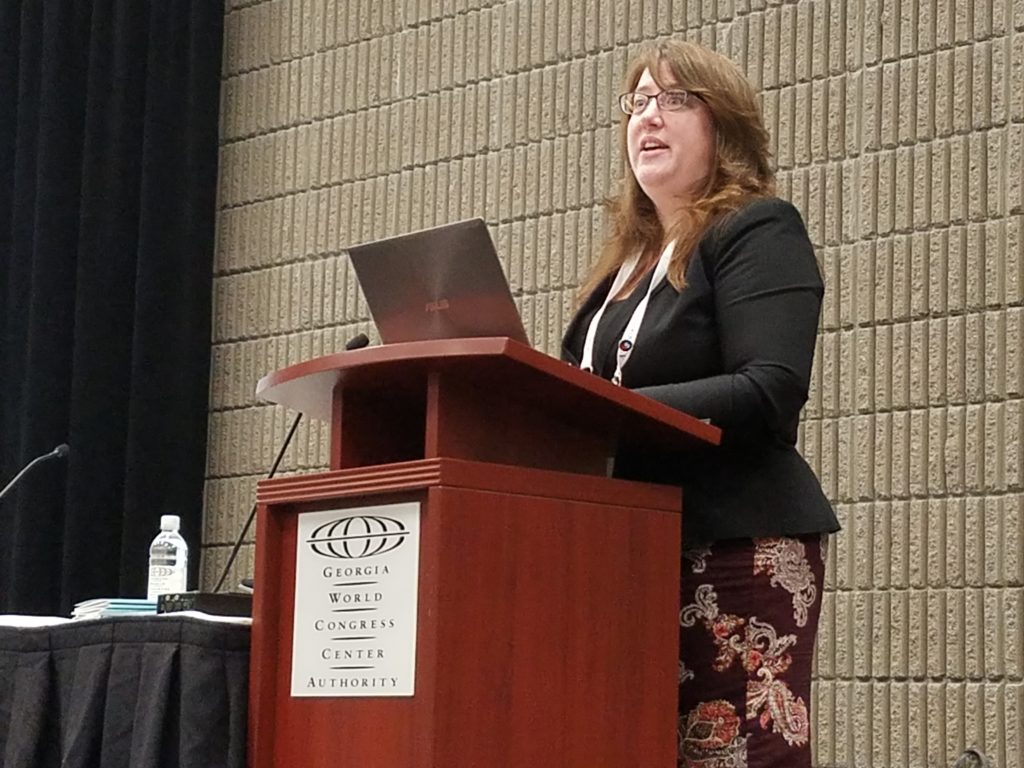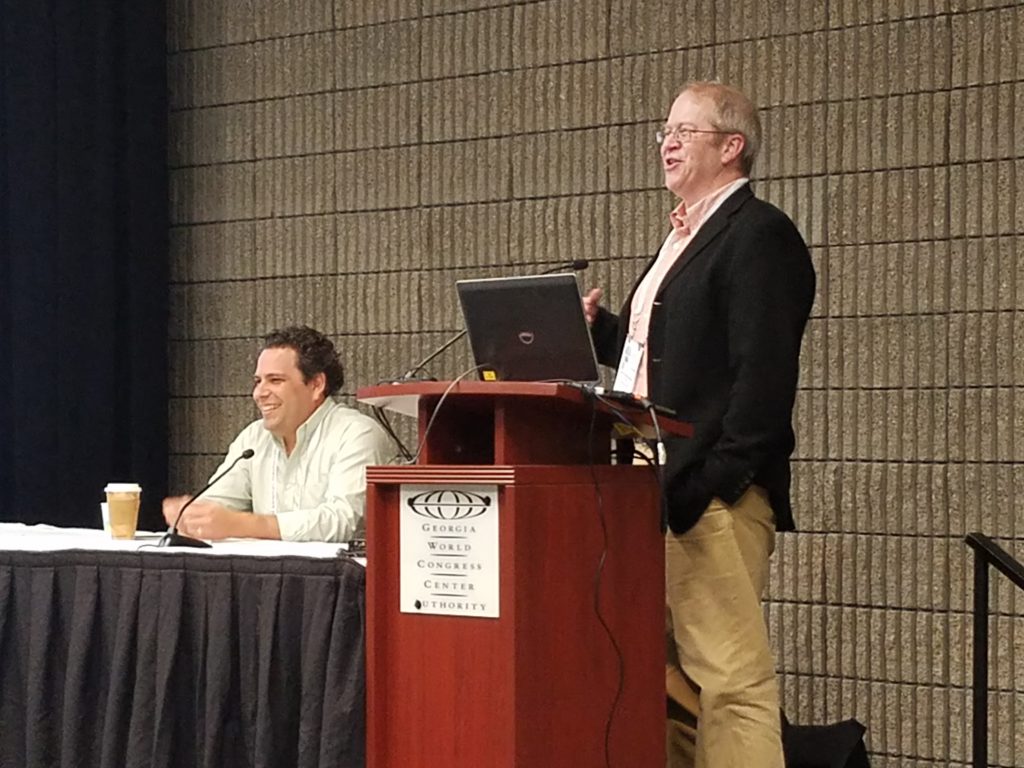The 2017 ALA Midwinter conference in Atlanta, Georgia featured some forward-thinking sessions sponsored by ALA’s Center for the Future of Libraries gathered under an umbrella called “The Symposium on the Future of Libraries.” As a member of the Center’s Advisory Committee, I was honored to join others in reviewing proposed sessions, and provided some write-ups for American Libraries of the excellent sessions selected. The full articles available online here and here.
Here are my raw notes and photos from the sessions I covered:
Sustainable Thinking for the Future of Libraries
Rebekkah Smith Aldrich will, as she says, talk to anyone with 5 minutes to spare about sustainability. Not in terms of what water bottles or recycle bins are the best, but the in terms of strategic directions to have the “capacity to endure.”
“I want to make sure we’re fulfilling our missions in a way that matters – especially in terms of ensuring policymakers in our communities have an understanding of modern libraries and are worthy of investment.”
In a fiery, inspirational style — and citing the many disruptive factors in the environment, politics, society, technology, and more — Rebekkah stirred the audience (including several calls-and-responses, including several “hell yeahs”) to engage on some of the pressures libraries are feeling and how sustainability is attainable throughout all of the change.
One place for librarians to start is by exploring what they believe (in terms of values) and expressing those to empower, engage and energize their libraries and communities. Using the “Triple Bottom Line” test (Is this environmentally sound? Is this economically feasible? Is this socially Equitable?), librarians can ensure that the most important bases are covered as they make decisions about services, buildings and — hopefully — engaging in their communities beyond library walls.
One of Rebekkah’s key messages is that in all times — including time of crisis — libraries are one of the most important places in each community to not just respond, rebuild and restore — but to thrive and endure.
Interested in more? Rebekkah invites all librarians to Join the Sustainability Round Table: http://www.ala.
Immersive and Interactive: Virtual Reality In a Contextually-rich Learning Environment
You might have heard about VR (Virtual Reality). How can Virtual Reality content be used in learning?
Matthew Boyer (Assistant Professor of Educational Foundations, Clemson University College of Education) and Stephen Moysey (Associate Professor, Clemson University Department of Environmental Engineering and Earth Sciences) explored that very question at the ALA Midwinter Conference in Atlanta.
VR is currently available in several forms — including forms involving “Google Cardboard” viewers that offer VR on mobile phones to more immersive experiences that require more powerful computing hardware such as Oculus Rift.
One application that the pair demoed is a VR-powered visit to the Grand Canyon. Called a Virtual Reality Field Trip, the use of VR here is to “bring the field to the students.” Good VRFT design is tied, of course, to good course design. The VR experiences are aligned to the content and learning goals of classes with the “in the field”-like experience of interacting with the geography and elements that one might experience in a real-life trip to the Grand Canyon.
There are lots of options to dabble in VR, including a wealth of pre-recorded VR content online (viewable via Google Cardboard).
For those wanting to try making their own VR, there are fancy 360-degree cameras available, but much simpler approaches are also possible. Through the use of Google Street View on a mobile phone, nearly anyone (those physically able to move the camera to cover the 360-degree field — the software “stitched” the image together t make things seamless) can manually capture a 360-degree photo that can be viewed in a VR context such as Google Cardboard.
The presenters are also fans of what they call “emancipating VR” – although for some the technology seems like science fiction (and only suitable for expensive gear and development platforms), using simpler approaches like Google Streetview and online services such as Thinglink (https://www.thinglink.com/) to put things together, the onramp for library VR may be simpler and quicker than many think.
21st Century Library Ethics
San Rafael, California Library Director Sarah Houghton – a renowned library ethics advocate (see her popular blog at http://librarianinblack.net/ for more) — brought her message to a standing room only session Monday morning at ALA Midwinter.

Making note of political tensions among librarians in the wake of the new US presidential administration, controversy among librarians in light of the new US administration (“I’ve seen librarians eating librarians in the hallway…”) Sarah encouraged the crowd in a deep breath (in and out) and think about ALA’s founding documents as a north star to steer by in challenging times.
Quoting a popular – and controversial — tweet from the Storytime Underground “LIBRARIANS ARE NOT NEUTRAL AND LIBRARIES ARE NOT NEUTRAL SPACES,” Libraries are inclusive, Sara says, but certain materials libraries make available and the publics served by libraries offend people every day.
In her talk, Sarah used the framework of ALA’s Library Bill of Rights to revisit what librarians say about their own ethics and apply them to current situations. One easy rallying point for most libraries — and with little controversy among librarians – is fighting censorship in all of its forms.
Despite ALA’s Code of Ethics’ theme of freedom, Sara says parts of the code create the most heated discussion among librarians – with each statement (and even segments of each statement) drawing a wide range of opinions and interpretations.
In terms of ensuring the free-flow of information, Sarah called out Digital Rights Management (DRM) that allows content creators to “lock” content that can only be opened with a special digital key – meaning without that key it’s possible and even likely that information will not be available in the future.
Currently under threat is the concept of “Net Neutrality.” There are commercial interests that want to create “Internet fast and slow lanes” instead of today’s open Internet – which is another way of censoring information by virtue of making it slower to access. Also problematic are vendors libraries working with libraries – with some sacrificing user confidentiality and privacy.
Resources to equip librarians include the Library Privacy Project, the Library Digitial Privacy Pledge, the IFLA Statement on Privacy in the Library Environment, and ALA’s soon-to-be-released Library Privacy Guidelines (in checklist form friendly to all sizes of libraries).
Despite Sarah’s personal convictions – and referring to item VII in the Code of Ethics — she urges the librarians to check personal biases and preference at the library door when coming into work to best serve the entire community.
Sara’s session covered much more ground – I’m not sure I’ve seen as many people in a library conference taking careful notes — all at the same time.
Created with Andy Woolworth, Sarah shared a new project called Operation 451 (http://operation451.info/) to suggest positive ethical actions for librarians in challenging times.

